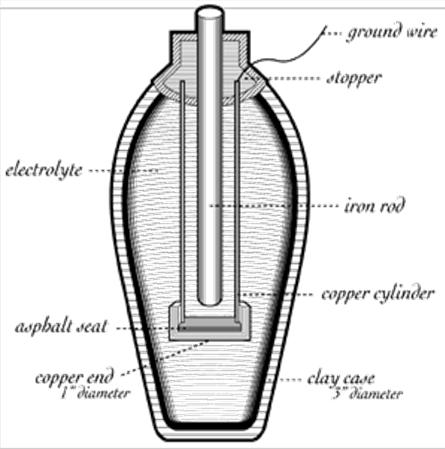A common misconception about the Parthians is that they lacked interest in the development of learning, science and technology. This belief is derived from the paucity of the available evidence, the lack of archaeological studies as well as subjective bias.
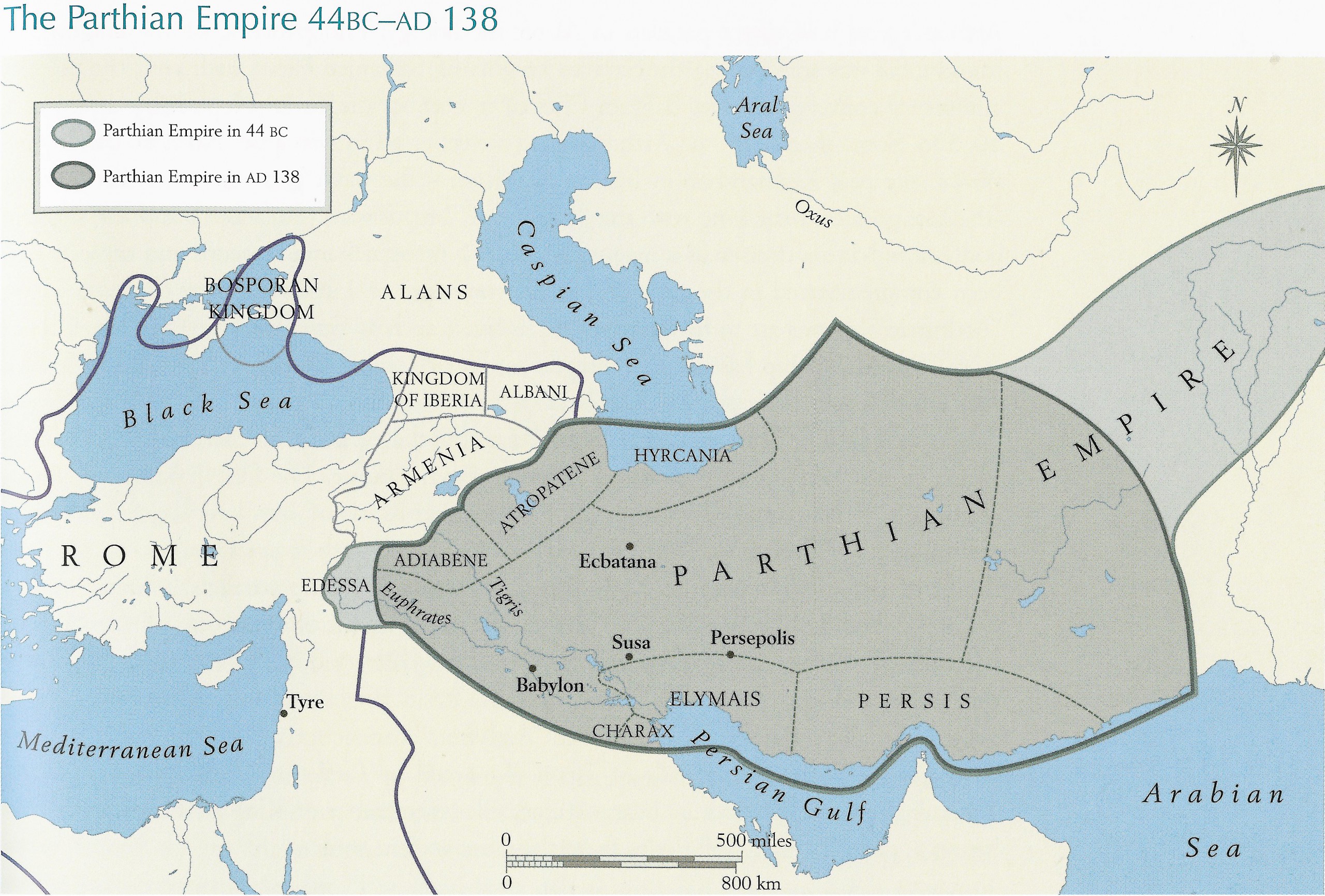
Map of the Parthian Empire in 44 BCE to 138 CE (Picture source: Farrokh, page 155, Shadows in the Desert: Ancient Persia at War-Персы: Армия великих царей-سایههای صحرا–). For more on the Parthians see … “The Parthian Era“
Technology certainly continued to evolve during Parthian rule. A dramatic discovery of a tomb by German Archaeologist Wilhelm Konig at Khujut Rabu (near modern Baghdad in Iraq) in 1936 found two near intact jars dated to the Parthian dynasty (approx. 250 BCE-224 CE) which are possibly (as this is debated) the world’s oldest batteries.
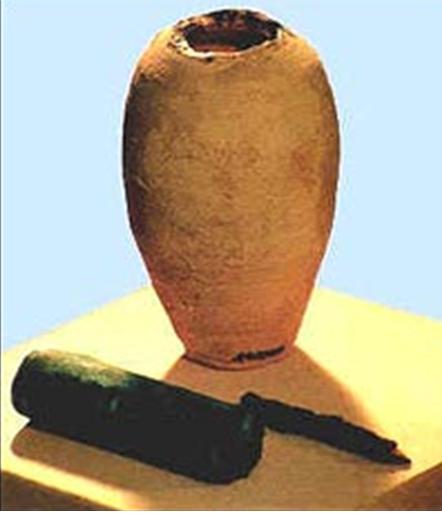 A Parthian battery (Source: Ancient Amnesia). Note the clay jar which featured an iron cylinder surrounded by a cylinder of copper.
A Parthian battery (Source: Ancient Amnesia). Note the clay jar which featured an iron cylinder surrounded by a cylinder of copper.
There have been a number of reconstructions of this ancient device in western laboratories and universities.
A schematic representation of the ancient Parthian battery (Source: Pinterest).
Nevertheless, not all historians accept Konig’s 1940 report that the items were “batteries” – there are modern scholars who in fact reject this notion academically (see for example the arguments of archaeology professor, Elizabeth Stone from the Department of Anthropology, Stony Brook University). The video below provides a succinct overview of both viewpoints (i.e. device was a “battery” vs. device was not a “battery”):
What is generally agreed upon is that the “batteries” were used to electroplate items by mainly putting one layer of metal upon another (e.g. gold upon silver). Support for this position is provided by the fact that this technique is still in evidence in many traditional metalworking shops in Iran today (i.e. Isfahan, Tabriz, etc.).
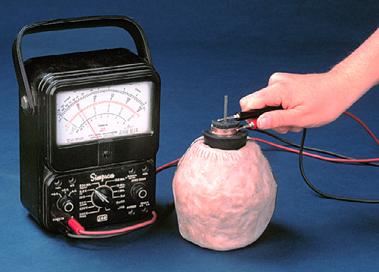 Tests by Western scientists have revealed that when the jar of the battery was filled with vinegar (or other electrolytes), it was capable of generating between 1.5-2.0 volts (Source: Dennielle Downs and Ava Meyerhoff in Smith College History of Sciuence, Museum of Ancient Inventions).
Tests by Western scientists have revealed that when the jar of the battery was filled with vinegar (or other electrolytes), it was capable of generating between 1.5-2.0 volts (Source: Dennielle Downs and Ava Meyerhoff in Smith College History of Sciuence, Museum of Ancient Inventions).
If the jars were indeed “batteries” in the modern sense, then Count Alassandro Volta’s invention of the modern battery may have been predated by 1,600 years or more.
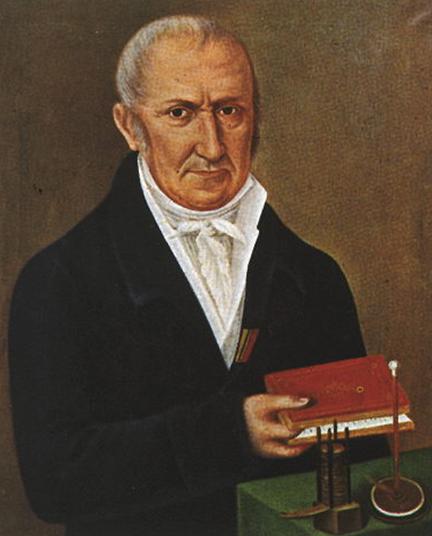 Count Alessandro Volta (1745 – 1827) (Image Source: Public Domain), is often credited with the invention of the modern battery. His legacy in the domain of physical sciences is seen in the term “Volt” derived from his last name “Volta”. In practice the very concept of the battery may have been invented in ancient Parthian Persia at least 1600 years past.
Count Alessandro Volta (1745 – 1827) (Image Source: Public Domain), is often credited with the invention of the modern battery. His legacy in the domain of physical sciences is seen in the term “Volt” derived from his last name “Volta”. In practice the very concept of the battery may have been invented in ancient Parthian Persia at least 1600 years past.
The arena of Parthian studies has been advanced significantly, notably in the last three decades, with much remaining to be investigated, notably with respect to Parthian contributions in the arts, architecture and technology. The discussion of the possible “Parthian battery” remains a case in point.
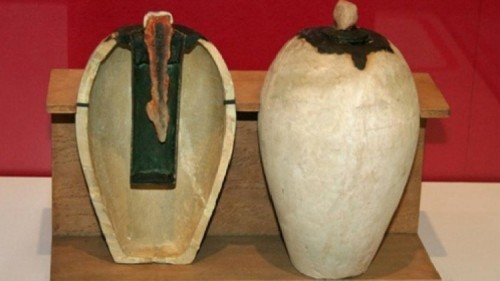
An ancient Parthian battery displayed by the Iraqi Civil Society (Source: Mohamed Al-Taher, Iraqi Civil Society).

